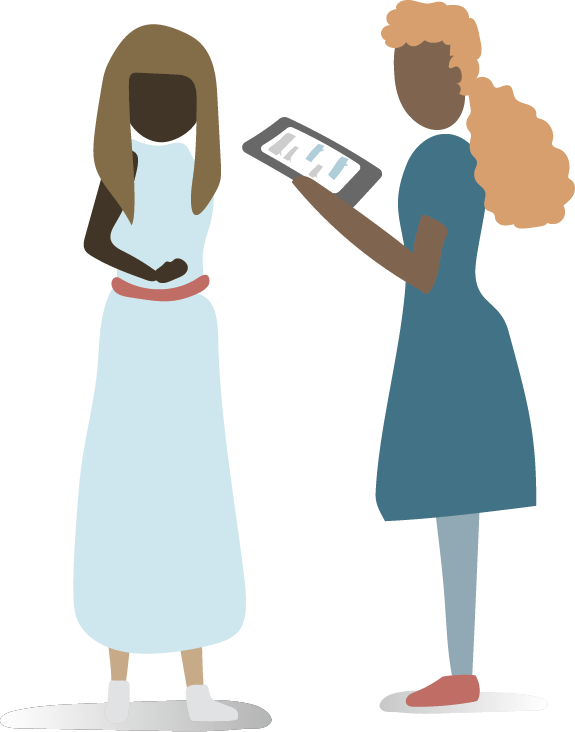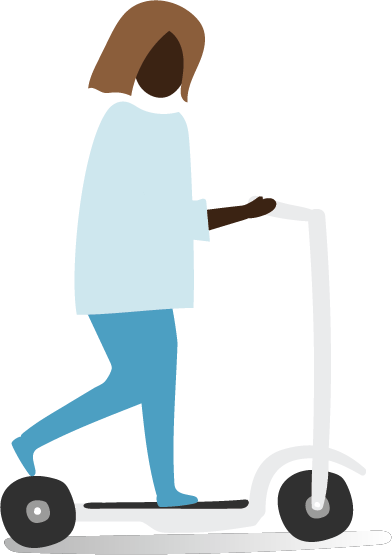Safety and Thriving
Making Meaning of Safety and Thriving in Black and Brown Communities in NYC
As a result, there has been a proliferation of programs and policy interventions that are aimed at creating non-carceral mechanisms for the creation and maintenance of safety in Black and Brown communities. Noticeably, these programs and the research that informs them are largely focused on safety, and seldom look beyond safety to thriving or other measures of community success.
Moreover, even when the research involves community participation, the solutions developed by governments and funders are often crafted without the input of the people they seek to benefit. This is no accident. This is the result of structural racism and inequity that prevents historically marginalized communities from participating in the conversations that determine the future of their neighborhoods.
This research was conducted before the COVID-19 pandemic and the 2020 #BlackLivesMatter protests which coalesced into national resistance to antiblack violence, set off by the racialized police murder of George Floyd in Minneapolis, MN, Breonna Taylor’s murder by police who have not been arrested in Louisville, KY, and the murder Ahmaud Arbery while on a run in his Brunswick, GA neighborhood. NIS sees this research as necessary to addressing the gap between the undeniable facts that Black and Brown people in NYC are dying disproportionately of COVID-19 and at the hands of the police, and the disproportionately negative impact that the City’s austerity budget will have on those same communities.
In that context, NIS affirms the importance of maintaining and expanding services essential to safety and thriving in Black and Brown communities, including current policy discussions around police defunding and abolition. In collaboration with community partners and government agencies, NIS has begun building on the findings outlined in the report, laying the foundation for a portfolio of Safety & Thriving work.
Safety: What does safety mean to you?
Major findings include:
Safety is the protection from harm and building systems to prevent future harm.
Safety is largely contingent on having material resources and ability to meet basic needs.
Ownership and autonomy at the individual and community levels are the pathways to safety.
Safety is the freedom of being one’s self.
The NIS team’s findings on safety highlight that the creation of safety in Black and Brown communities is often misunderstood as being a primarily physical or environmental phenomenon, when in fact it’s a multi-dimensional construct that is about protection from harm caused by oppressive structures. Our interview participants also named that, as a result, external perceptions of what keeps Black and Brown communities safe are often pathologizing, paternalistic, and racist.
Additionally, participants were clear that safety is resource-dependent. That having the material resources necessary to meet one’s basic needs is a key dimension of how safety is created and maintained, and that those needs are emotional and psychological as much as material. For many participants, those needs could not be met without ownership and autonomy, at both the community and individual levels. As part of that, safety involved both interconnection, within communities and across generations, and an awareness and freedom of self in relation to larger systems.
Participants described explicitly what would bring safety and undergirded in these descriptions were four latent assumptions on how to create safety. Safety required both physical proximity and social familiarity. Full control over one’s self, communities and resources, and institutions would create opportunities for safety, and external impediments to obtaining this control would be removed. Those who attempted to create safety for Black and Brown communities would engage in higher-order systems thinking while simultaneously understanding localized context. Moreover, safety would be created when through a decrease in the allostatic load (stress, worry, fear), the body could experience homeostasis (calm, tranquility). These latent shared assumptions describe how safety could be identified, structured, and assessed.
Thriving: What does thriving mean to you?
Major findings include:
Thriving is the ability to become your most authentic self.
Thriving is choosing how you want your life to go.
Community ownership is a critical component of thriving.
Thriving is believing that you matter and will contribute meaningfully to change.
Thriving is ancestral and understanding legacy helps to understand the community’s value.
Because none of the existing research that NIS identified in the scoping review directly studied understandings of thriving or related concepts, NIS’s findings on thriving provide formative evidence of those understandings. Participants highlighted that it was not possible to thrive without feeling safety, and that thriving went beyond mere survival. For many, thriving was about choice and the ability to see and work towards the future. In order to thrive, people needed to be able to be their authentic individual selves and believe they mattered and could contribute to change in their communities.
Building on the findings around safety, participants saw community ownership as a critical component, and primary mechanism, of thriving, which involved both access to knowledge and the ability to actively create non-oppressive institutions and experiences.
Thriving tapped into the legacy of communities driving that kind of creation to build truly community-owned responses to people’s needs, involving both small and large forms of joy and accomplishment.
Every practice and strategy related to thriving that was shared by the participants was rooted in one of four distinct assumptions. These assumptions guided how thriving would manifest if created. Participants constructed thriving as an imaginative construct rooted in possibility rather than practicality. Thriving relied heavily on the ability to take a long-term perspective and dream new possibilities, rather than simply live in current realities. Structuring a thriving environment would mean structuring an environment full of choices. Choice was at the core of thriving. Finally, interdependence was fundamental to the how of thriving, specifically the need to rely on community in order to advance toward any semblance of thriving.
Recommendations
A collective understanding what needs to happen to create safety and thriving and the how to create it led to the development of research and practice recommendations on how to support safety and thriving in Black and Brown communities. The line between research and practice is necessarily blurred in community-based participatory research, and all of the research recommendations should be developed with community activists and other practitioners who can help ground and make use of the research.
Research
NIS recommends next steps in research around safety and thriving to:
Develop an evidence base for effective community ownership of government processes to inform and iterate on processes that ensure that government agencies are held accountable to actual mechanisms of ownership.
Further identify and analyze the economic and historical dimensions of safety and thriving to shape the role that economic activities and cultural legacy play in creating safety and enhancing thriving.
Identify opportunities for integrating thriving-focused research into community-based work to fill the research gap and meet people’s interest in working more directly with community members on questions of thriving.
Practice
NIS also recommends that practitioners and funders collaborate to:
Fund community research collectives, rather than individual researchers, for long-term projects in order to build consistent community expertise and affect desired change.
Support cross-community work to build solidarity, share information and resources, identify shared needs, and build greater community power.
Support intergenerational work to build the capacity of young people to both learn from older generations and see themselves as experts in their communities.
Create a container for all community-based research on safety and thriving in Black and Brown communities in NYC in order to make it more publicly accessible and actionable, build connections across groups that have conducted research, and coordinate funding for continued research




